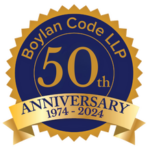By DONALD A. YOUNG, Esq.
Wednesday, August 24, 2011
THE DAILY RECORD
My wife and I welcomed our first child, a lovely baby girl, into this world almost six months ago. We are head over heels in love with her. The problem is, so are her grandparents. Why is this a problem? Both sets of grandparents live quite a distance away, making it difficult for them to visit her as often as they would like. The solution – video chat.
The day I told my parents about Skype (software that allows for video chat over the Internet, often for free), they rushed to their local electronics store and purchased a shiny new web camera. Later that night, as the grandparents gathered around their laptop in New Hampshire and Mom, Dad and baby gathered around their laptop in Rochester, New York, we were all able to visit – without the seven hour drive. Baby flashed her precious little smile and showed off her new trick – sitting up with a little bit of assistance – while her grandparents, overjoyed, beamed back their own smiles. Later in the month, my wife, baby and I would “FaceTime” (video chat over the iPhone) with baby’s other grandparents in the Southern Tier.
How does this relate to local government? It may be surprising for some to learn that New York Open Meetings Law specifically authorizes local municipalities to conduct public business via “videoconferencing” (See NY Public Officers Law Section 102(1)). For example, should a board member be out of town on the evening of a town public meeting, the board member may remotely attend the meeting (and count towards establishment of a quorum) via two-way videoconference. As long as the videoconference allows for the public to see and hear the board member, and as long the board member can see and hear the public, that remote town board member is well within the law to listen, discuss and vote on public business.
Videoconferencing hasn’t taken a firm hold within too many local municipalities at this time, however, there are some early adopters. Take for example, the Village of Saltaire – a small seasonal community located on Fire Island off the coast of Long Island. The Village itself is inaccessible by car, so often travel to and from the Village during the winter is difficult. On one wintery February day in 2009, the Board of Trustees for the Village decided to conduct a Village public meeting via videoconference. The Board itself met in a room in Manhattan and via two-way videoconferencing, simultaneously conducted the meeting on Fire Island in the Village Hall. So, while the Village Board was physically sitting in a room in Manhattan, they could see and hear, and be seen and heard by, those present at the Village Hall on Fire Island via the videoconferencing technology.
Displeased with the fact that its Board conducted a meeting from outside the geographical boundaries of the Village, a number of Village residents commenced a lawsuit to compel the Board to conduct all public meetings from within the geographical bounds of the Village. Siding with the residents, the Suffolk County Supreme Court rendered a judgment against the Village on September 3, 2009, compelling the Village Board to conduct all public meetings within the geographic boundaries of the Village.
On appeal, the Second Department reversed the lower court decision, citing to Public Officers Law Section 102(1) for its provision that a public body may convene to conduct public business through the use of “videoconferencing for attendance and participation by members of the public body.” Matter of Petersen v. Incorporated Vil. of Saltaire, 77 A.D.3d 954 (2nd Dept. 2010). The Court also noted that Section 41 of New York General Construction Law allows a quorum to be established where the majority of a public body “gathered together in the presence of each other or through the use of videoconferencing.”
While some might find it rather comforting that grandma and grandpa, adorned in their matching pajamas and sipping on hot chocolate from the comfort of their own home, can Skype with their grandchildren across state lines, others may be a bit apprehensive about the thought of a municipal representative “Skyping” with their respective residents in the same manner – nevertheless, the law clearly authorizes it (though it doesn’t promote the pajamas and hot chocolate).
While the law might seem overreaching in its embrace of technology in some respects, it really is quite sensible when one boils it down. The idea is that while being physically present is the most preferable option, when videoconferencing is used properly it very closely mimics physical presence because it allows board members to see and hear, and be seen and be heard. On the other hand, the New York Committee on Open Government has repeatedly advised that an attempt to participate in a public meeting via other technologies that result in something less than “almost” physical presence, such as a telephone conference call or emails (and presumably instant messaging and texting), would clearly violate the Open Meetings Law. See, e.g., NY OML-AO-3346 (August 2, 2001); NY OML-AO-3479 (June 27, 2002); NY OML-AO-3732 (December 29, 2003).
This topic begs the question – what’s next? While I don’t see municipal representatives “Facetiming” with the public during public meetings (largely because the iPhone’s approximate 2.7 square inch screen cannot be said to establish a physical presence), this does bring back memories of Darth Vader communicating via holographic video. Believe it or not, real-time three-dimensional holographic video conferencing technology has already been developed. It doesn’t get much closer to actual physical presence than that and, because this type of technology is often classified as a type of video communication, it would presumably be permissible under NY Public Officers Law. Perhaps the next time you visit Town Hall for a public meeting you might want to take a closer look at those board members – you might be surprised to find out what you are actually looking at.


